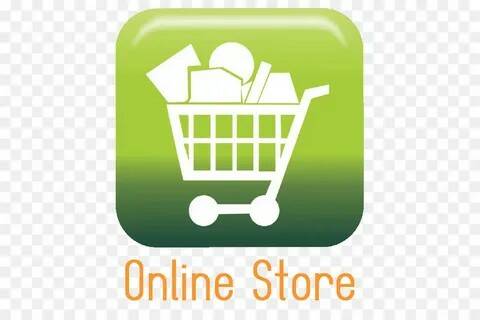
An online store, also known as an e-commerce store or an online shop, refers to a website or virtual platform where businesses or individuals sell products or services over the internet. It is a digital counterpart of a physical retail store, allowing customers to browse, select, and purchase items online.
The concept of an online store has become increasingly popular with the rise of internet usage and advancements in technology. Online stores provide convenience and accessibility, allowing customers to shop from anywhere and at any time without the need to visit a physical location.
Key features and components of an online store typically include:
Product Catalog
The product catalog is a key component and function of an online store. It serves as a digital representation of the products or services available for purchase. Here are the key functions and components of a product catalog in an online store:
- Product Listings: The catalog includes individual listings for each product or service offered by the online store. Each listing typically includes a title, description, images or videos, specifications, pricing, and any other relevant details.
- Categorization and Navigation: Products are organized into categories and subcategories, making it easier for customers to browse and locate specific items. A well-structured navigation system allows customers to explore the catalog efficiently.
- Search Functionality: An online store often includes a search feature that enables customers to search for specific products or keywords. This helps customers quickly find the desired items, especially in large catalogs.
- Filtering and Sorting: To enhance the browsing experience, online stores provide filtering and sorting options. Customers can refine their search results based on criteria such as price, brand, size, color, and other relevant attributes.
- Product Variations: If a product comes in different variations (e.g., sizes, colors), the catalog allows customers to select their preferred options. Each variation may have its own availability, pricing, and specifications.
- Product Reviews and Ratings: Customer reviews and ratings play an important role in the product catalog. They provide valuable feedback and insights for potential buyers, helping them make informed purchasing decisions.
- Availability and Stock Management: The product catalog reflects real-time availability of products. It updates stock levels as customers make purchases, ensuring that customers are aware of product availability before making a purchase.
- Product Recommendations: Online stores often employ algorithms to generate personalized product recommendations based on customer browsing and purchase history. These recommendations appear within the catalog, encouraging customers to discover related or complementary items.
Shopping Cart
The shopping cart is a critical component and function of an online store. It allows customers to select and manage the items they wish to purchase. Here are the key functions and components of a shopping cart in an online store:
- Add to Cart: Customers can add products or services to their shopping cart from the product catalog or product detail pages. This function typically involves a button or icon that allows customers to indicate their intent to purchase a specific item.
- Item Details: The shopping cart displays relevant information about each item, such as the product name, price, quantity, and any selected variations (e.g., size, color). It also provides options to modify quantities or remove items from the cart.
- Subtotal and Total Calculation: The shopping cart automatically calculates and displays the subtotal, which is the cumulative cost of all items in the cart. It also calculates the total cost, which includes any applicable taxes, shipping fees, or discounts.
- Quantity Adjustment: Customers can easily adjust the quantity of each item in the shopping cart. They can increase or decrease the quantity according to their desired quantity of each product.
- Coupon Codes and Discounts: The shopping cart allows customers to apply coupon codes or discounts to their order. This functionality provides an option to enter valid promotional codes to receive discounted pricing or special offers.
- Saving and Retrieving Carts: Some online stores provide the option for customers to save their shopping carts for future sessions. This enables customers to return to their cart at a later time without losing the selected items.
- Estimation of Shipping Costs: The shopping cart may provide an estimation of shipping costs based on the customer’s location and the selected shipping method. This allows customers to have an idea of the additional costs associated with their order.
Payment Processing
- Add to Cart: Customers can add products to their shopping cart with a single click or tap. This function allows them to select items they want to purchase and add them to their virtual cart.
- Item Details: The shopping cart displays relevant information about each item, such as the product name, price, quantity, and any selected variations (e.g., size, color). This information helps customers review their selections before proceeding to checkout.
- Quantity Adjustment: Customers can easily adjust the quantity of each item in their shopping cart. They can increase or decrease the quantity according to their desired quantity of each product.
- Remove Items: The shopping cart provides an option to remove unwanted items from the cart. Customers can delete products they no longer wish to purchase, ensuring that their cart only contains desired items.
- Subtotal and Total Calculation: The shopping cart automatically calculates and displays the subtotal, which is the cumulative cost of all items in the cart. It also calculates the total cost, including any applicable taxes, shipping fees, or discounts.
- Coupon Codes and Discounts: Customers can apply coupon codes or discounts to their order within the shopping cart. This feature allows them to enter valid promotional codes to receive discounted pricing or special offers.
- Save for Later: Some online stores offer a “Save for Later” option in the shopping cart. This function allows customers to move items out of their cart but keep them saved for future reference or potential purchase.
Order Management

Order management is a crucial function in an online store https://www.buydo.eu that involves handling and processing customer orders from the time they are placed until they are fulfilled. Here are the key functions and components of order management in an online store:
- Order Placement: When a customer completes the checkout process, the online store receives and records the order details. This includes information such as the customer’s name, contact information, shipping address, payment method, and the items purchased.
- Order Confirmation: The online store sends an order confirmation to the customer, acknowledging the successful placement of the order. This communication provides reassurance to the customer and serves as a reference for future inquiries.
- Inventory Management: The online store updates its inventory system to reflect the items sold. This ensures accurate stock levels and helps prevent overselling.
- Payment Processing: The online store initiates the payment processing to charge the customer’s chosen payment method. This involves securely transmitting payment details to the payment gateway or processor for authorization and settlement.
- Fulfillment and Shipping: The online store prepares the ordered items for shipment, which may involve picking, packaging, and labeling. It generates shipping labels and coordinates with shipping carriers to ensure timely delivery to the customer’s designated address.
- Order Tracking: The online store provides order tracking information to the customer. This allows customers to monitor the progress of their shipment and estimate the expected delivery date.
- Customer Communication: Throughout the order fulfillment process, the online store communicates with the customer to provide updates, address any concerns or questions, and provide assistance as needed. Communication channels may include email, SMS, or in-app notifications.
Customer Accounts
Customer accounts are an essential component of an online store, providing customers with personalized and convenient features. Here are the key functions and components of customer accounts in an online store:
- Account Creation: Customers can create their accounts by providing necessary information such as their name, email address, and password. Some online stores also offer social media login options for quick account setup.
- Personal Information Management: Customer accounts allow individuals to manage their personal information, such as their shipping addresses, billing addresses, contact details, and payment preferences. This information can be stored securely for future orders.
- Order History: Customer accounts provide a history of past orders, allowing customers to view and track their purchase history. This feature helps customers track shipments, reorder favorite products, and review their past buying behavior.
- Wishlist and Favorites: Online stores often offer a wishlist or favorites functionality within customer accounts. Customers can save products they are interested in for future reference or easy access, enabling them to track items they intend to purchase later.
- Account Settings: Customer accounts allow users to manage their account settings, including notification preferences, password changes, and communication preferences. This empowers customers to customize their experience with the online store.
- Loyalty Programs and Rewards: Some online stores integrate loyalty programs within customer accounts. Customers can accumulate rewards points or enjoy exclusive benefits based on their purchase activity, encouraging repeat business and customer loyalty.
Customer Support
Customer support is a crucial aspect of an online store, ensuring customer satisfaction and resolving any issues or inquiries they may have. Here are the key functions and components of customer support in an online store:
- Contact Channels: Online stores provide various channels for customers to reach out for support, such as email, phone, live chat, or support tickets. These channels allow customers to communicate their concerns and receive assistance promptly.
- FAQ and Help Center: Online stores often have a comprehensive FAQ (Frequently Asked Questions) section or a dedicated help center. This resource provides answers to common customer inquiries, addressing potential concerns and offering self-service solutions.
- Knowledge Base: A knowledge base is a centralized repository of information about the products, services, and policies of the online store. It provides detailed guides, tutorials, and troubleshooting instructions, empowering customers to find solutions independently.
- Responsive Support Team: Online stores have a team of customer support representatives who are trained to address customer inquiries and issues promptly and professionally. They respond to customer queries, provide product information, resolve problems, and offer guidance.
- Order Assistance: Customer support assists customers with order-related inquiries, such as tracking shipments, updating addresses, handling returns or exchanges, and providing status updates on back-ordered or out-of-stock items.
- Technical Support: For online stores that sell technical products or services, customer support may include technical assistance. This involves troubleshooting issues, providing guidance on product usage, and addressing any technical difficulties customers may encounter.
- Product Recommendations and Guidance: Customer support representatives can offer personalized product recommendations based on customer needs and preferences. They can provide guidance on product selection, explain product features, and help customers make informed purchasing decisions.
